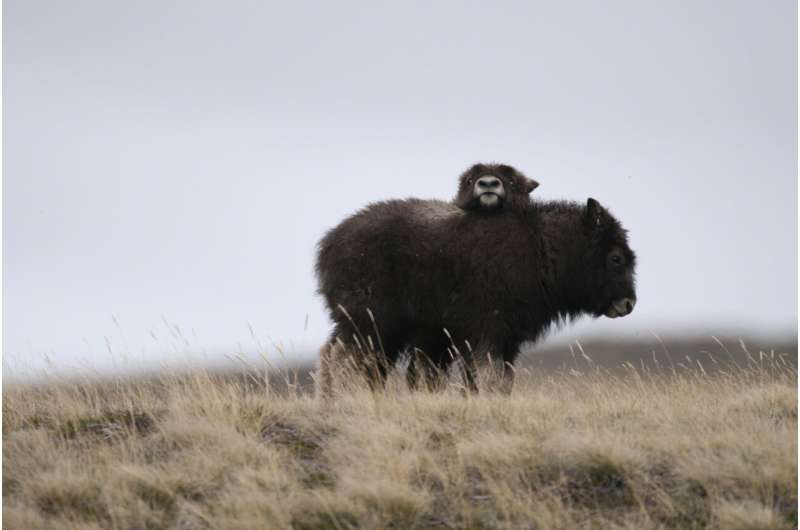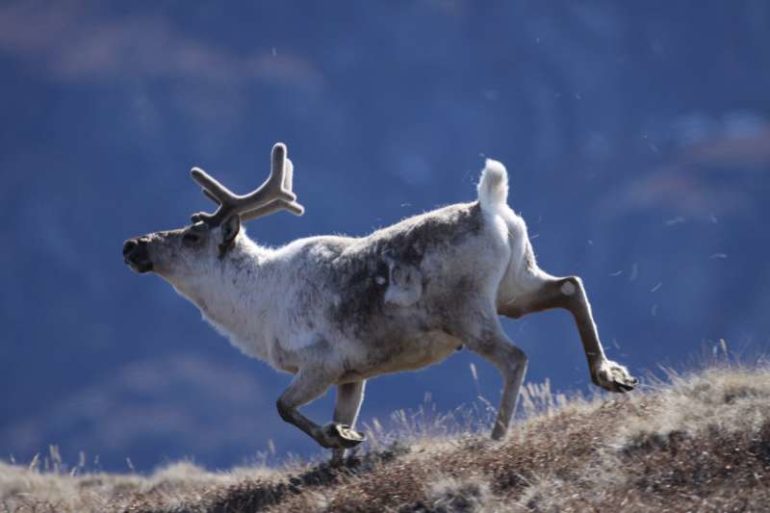A 15-year experiment on Arctic shrubs in Greenland lends new understanding to an enduring ecological puzzle: How do species with similar needs and life histories occur together at large scales while excluding each other at small scales? The answer to this question has important implications for how climate change might shift species’ distributions across the globe.
The study was published today in the journal PNAS and led by the University of California, Davis. Its findings also reveal trends related to carbon sequestration and carbon exchange as the Arctic becomes both greener and browner.
Expansion and exclusion
Like lines of traffic traveling the same roads at the same time without crashing into each other, dwarf birch and gray willow dominate the Arctic landscape, covering and overlapping the same expansive territory, yet excluding each other in nearly indistinguishable microhabitats.
The study suggests that climate and species interactions work together to promote the shrubs at large scales while also promoting their exclusion at small scales. In this case, herbivory by caribou and muskoxen tips the balance in favor of one species or another at small scales but favors their co-occurrence at large scales.
This question of species diversity and co-occurrence versus exclusion has roots in a seminal paper in 1958 by Robert H. MacArthur that is taught in community ecology classes across the world. In that study, five species of warblers in the northeastern United States were observed avoiding each other while making their livings on different parts of the same tree—some preferring upper or middle branches, others the ground or trunk, for example.
“This is one of the most readily observable phenomena in nature,” said lead author Eric Post, director of the UC Davis Polar Forum and a professor in the Department of Wildlife, Fish and Conservation Biology. “Yet what influences species co-variation at both scales is something ecologists have argued about for decades. Our study shows that the same factors can act at both large and small scales with opposite effects on co-occurrence and exclusion. It’s fascinating.”
Bringing the heat, excluding caribou and muskoxen
For the study, the authors conducted the 15-year experiment at Post’s long-time field site in Greenland. There, they recorded how arctic shrub abundance and composition changed in response to experimental warming treatments and to a treatment that fenced off large sections of tundra to exclude herbivores, such as caribou and muskoxen.
The experiment confirmed what recent theoretical work has suggested: physical conditions, such as climate, combine with species interactions to shape opposing patterns of variation among arctic shrubs at large and local scales.
Climate and carbon exchange
The Arctic is becoming warmer and, in many places, drier. Those conditions favor willow over dwarf birch, the study found, even though birch are more abundant at the study site. While the absence of large herbivores favors almost complete exclusion of willow by birch, warming under those conditions swings the pendulum back slightly in favor of willow. Work in progress at the site also indicates changes in numbers of caribou and muskoxen, suggesting that muskoxen may be driving the balance between willows and birch under warming.

How willow and birch react to such changes will affect how much carbon can be stored. The more shrubs in the Arctic, the more carbon is absorbed from the atmosphere. A diversity of species across the tundra provides a more efficient carbon sponge that just one dominant species of shrub.
“Woody shrubs are expanding across many, but not all, regions of the treeless arctic tundra in what’s referred to as ‘arctic greening,'” Post said. “We’re witnessing the transformation of a sensitive biome right beneath our feet.”
This work suggests that large herbivores can interact with warming-driven shrub expansion in complex ways, potentially shaping the carbon landscape.
As sea ice disappears, a greener and browner Arctic emerges
More information:
Eric Post el al., “Herbivory and warming interact in opposing patterns of covariation between arctic shrub species at large and local scales,” PNAS (2021). www.pnas.org/cgi/doi/10.1073/pnas.2015158118
Citation:
Arctic shrubs add new piece to ecological puzzle (2021, February 1)
retrieved 1 February 2021
from https://phys.org/news/2021-02-arctic-shrubs-piece-ecological-puzzle.html
This document is subject to copyright. Apart from any fair dealing for the purpose of private study or research, no
part may be reproduced without the written permission. The content is provided for information purposes only.



